Ribbon Mixer with its unique spiral ribbon structure, occupies a core position in the mixing of high-viscosity materials in the fields of chemical, food, pharmaceutical, environmental protection, etc. It realizes the overall circulation of materials through the axial-radial composite flow field, which is especially suitable for high-viscosity polymer melts, pastes and high-solid content slurries. This article will combine industry practice cases to systematically explain How to choose ribbon blender .
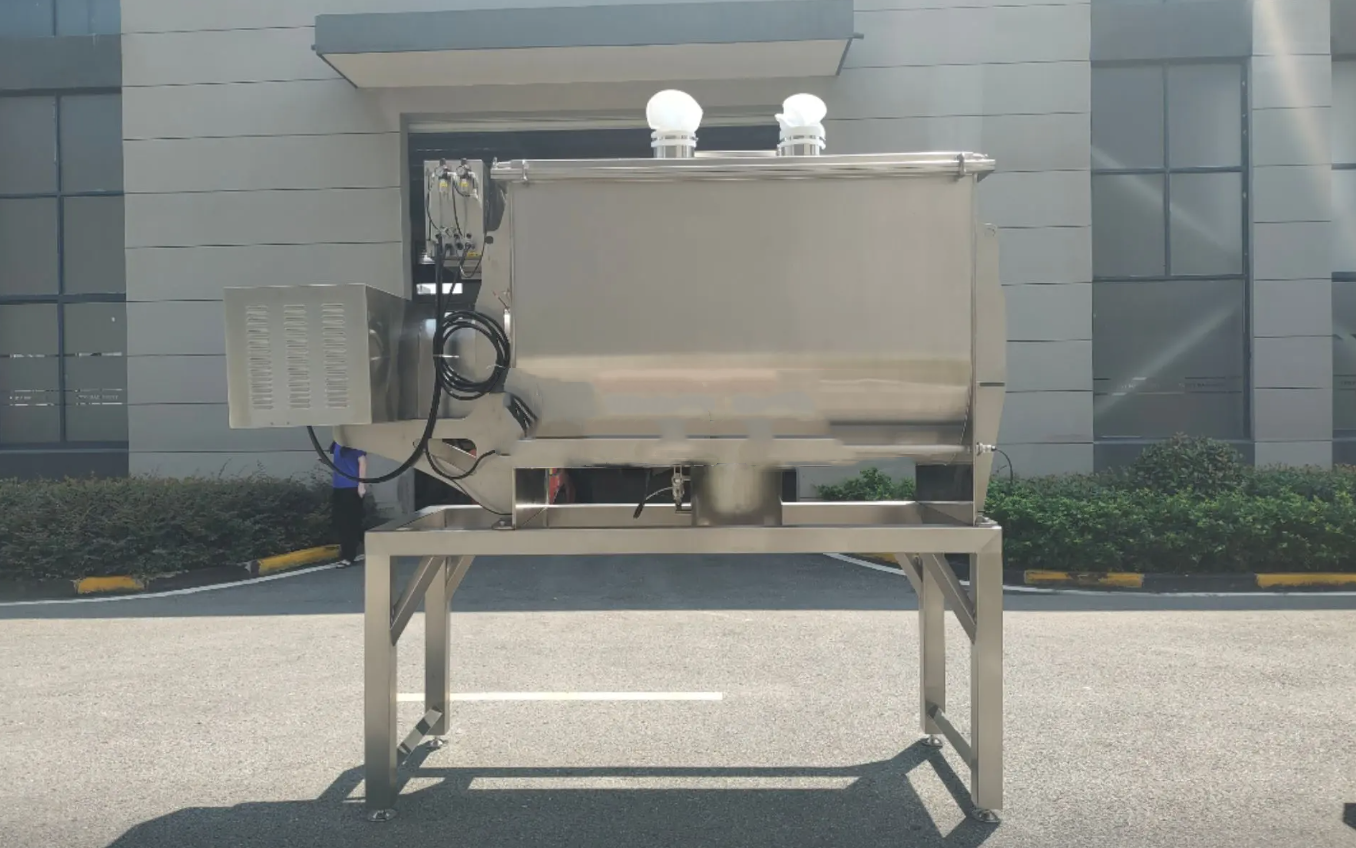
The selection of a spiral ribbon blender can start from the structure. The single spiral ribbon has a simple structure and is suitable for low-viscosity and single materials; the double spiral ribbon rotates inside and outside in reverse, which is suitable for high-viscosity, multi-component or materials with large density differences.
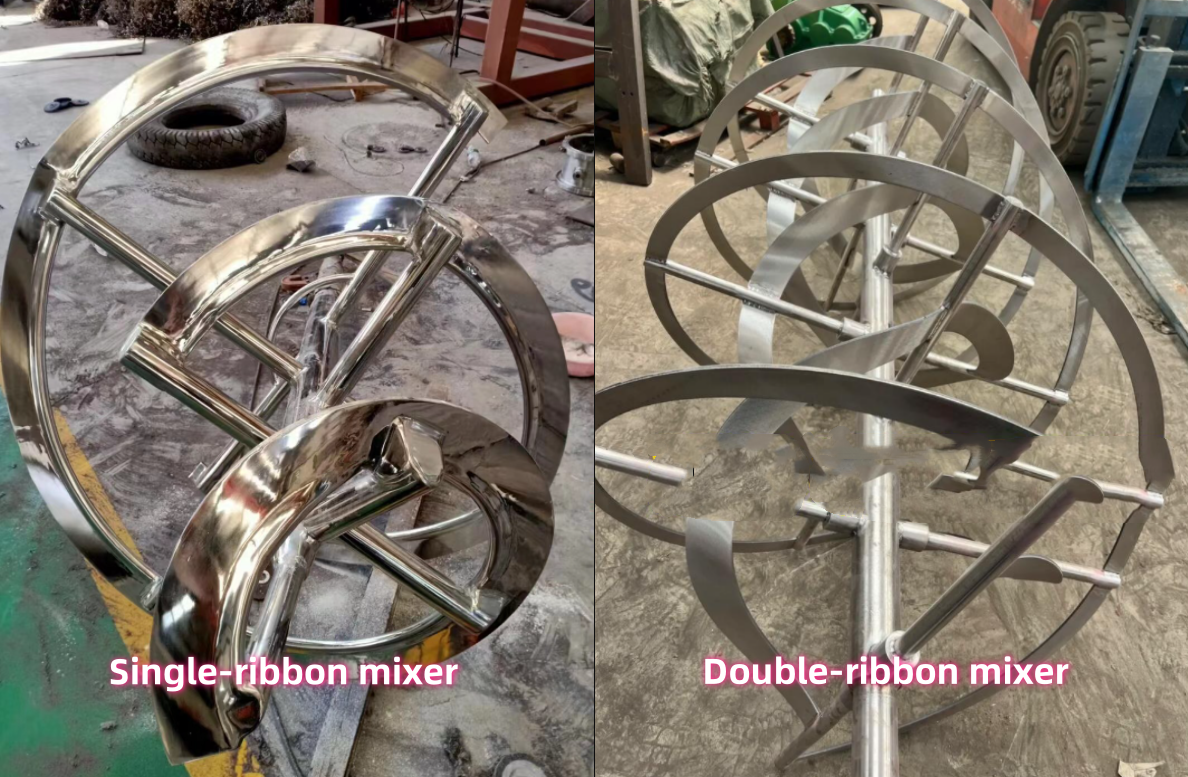
Single spiral ribbon blender: It adopts a horizontal barrel and a single-layer spiral ribbon design, which is suitable for mixing single materials with good fluidity or a small amount of components (such as grains, sand and gravel), as well as low-intensity scenarios with low uniformity requirements and viscosity <5000cP.
Double-ribbon mixer: A three-dimensional mixing field is constructed by reverse internal and external ribbons to achieve ultra-high uniformity of CV≤1.5%, which is specially designed to solve complex mixing problems: high-viscosity materials, multi-component difference systems, and fine low-loss mixing.
The ribbon mixer has excellent performance in mixing powders, pastes and high-viscosity materials due to its unique double-ribbon structure.
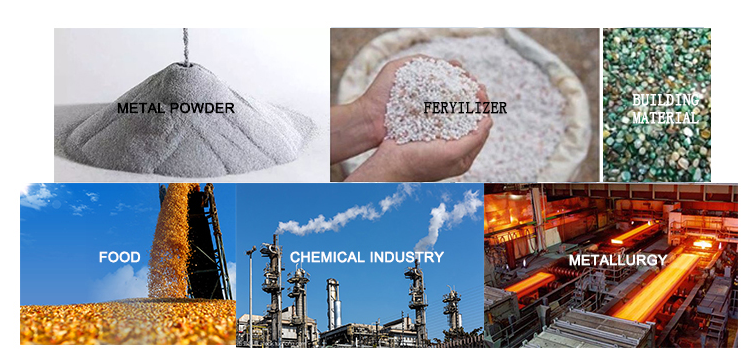
Low-viscosity powder/granules: Single or standard double-ribbon can be selected, with a large spacing between the ribbons. The speed of 10-30rpm can achieve axial conveying and mixing of loose materials.
High-viscosity paste/colloid: A large pitch and wide ribbon design is required, combined with a jacket heating structure, and the speed should be controlled at 5-15rpm to avoid material denaturation due to shear overheating.
Thixotropic materials: The double-ribbon needs to rotate in the opposite direction to destroy the material structure through the "push-pull" force to improve the mixing uniformity.
Large particle size difference: choose a serrated design on the edge of the ribbon to enhance shear dispersion ability and prevent large particles from settling.
Significant density difference: the gap between the ribbon and the barrel wall needs to be increased (usually 3-5mm) to reduce the dead corners of high-density materials.
Choosing a ribbon mixer should be based on production needs: look at the material, high viscosity, multi-component double-screw ribbon, single component with a single-screw ribbon.
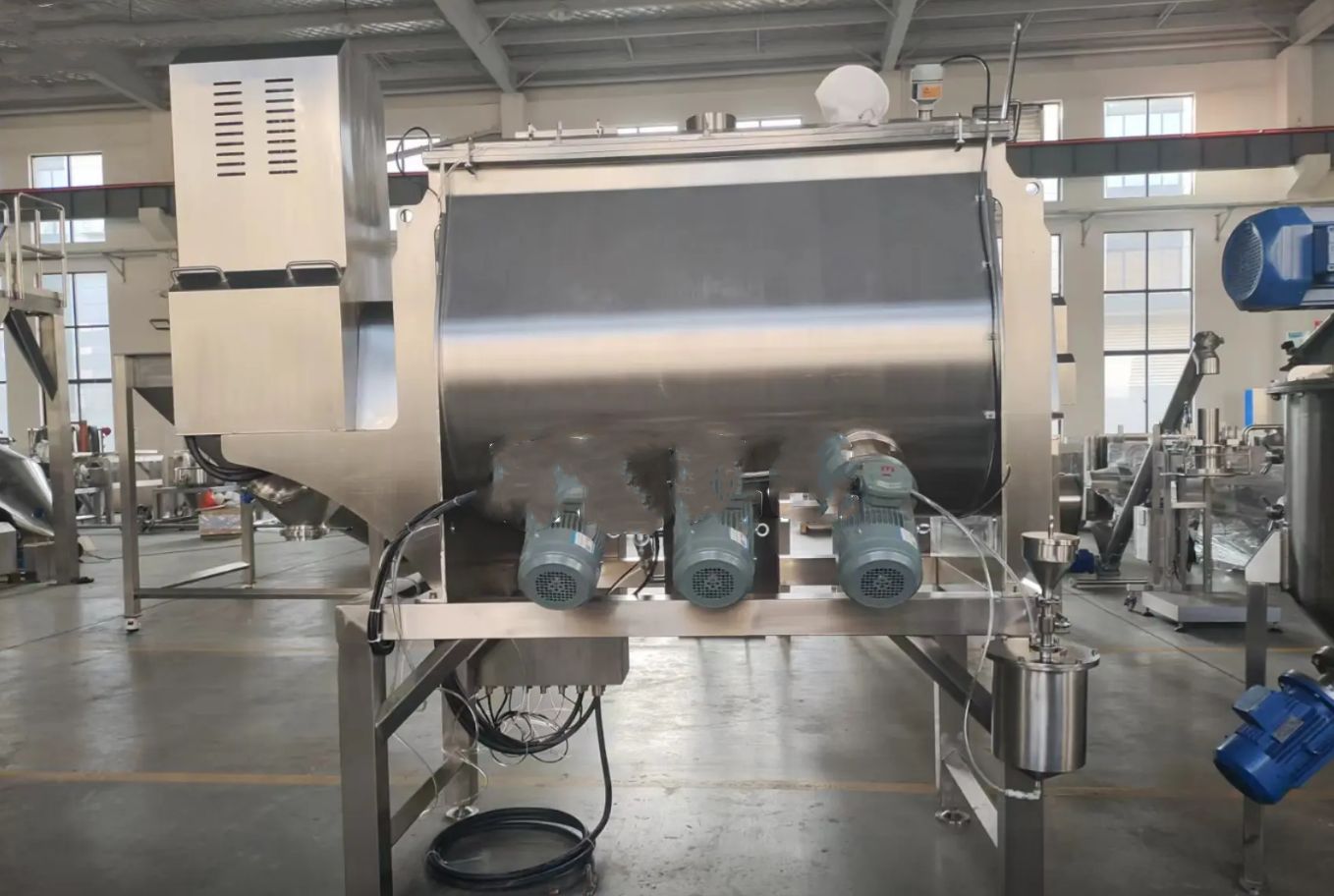
Mixing uniformity requirements: When the food, medicine and other industries require uniformity > 99%, double-layer ribbons should be used to achieve three-dimensional mixing through "radial cutting + axial conveying", and the flying knife group should be used to break the agglomeration.
Processing capacity and batch requirements: For large production lines, choose U-shaped trough + horizontal ribbon, with variable frequency speed regulation to avoid excessive load at startup; small experimental lines can choose vertical ribbons to save space.
When selecting the material for a ribbon mixer, 304 stainless steel is economical and practical for general chemicals and foods; 316L stainless steel is used for pharmaceuticals and acidic materials.
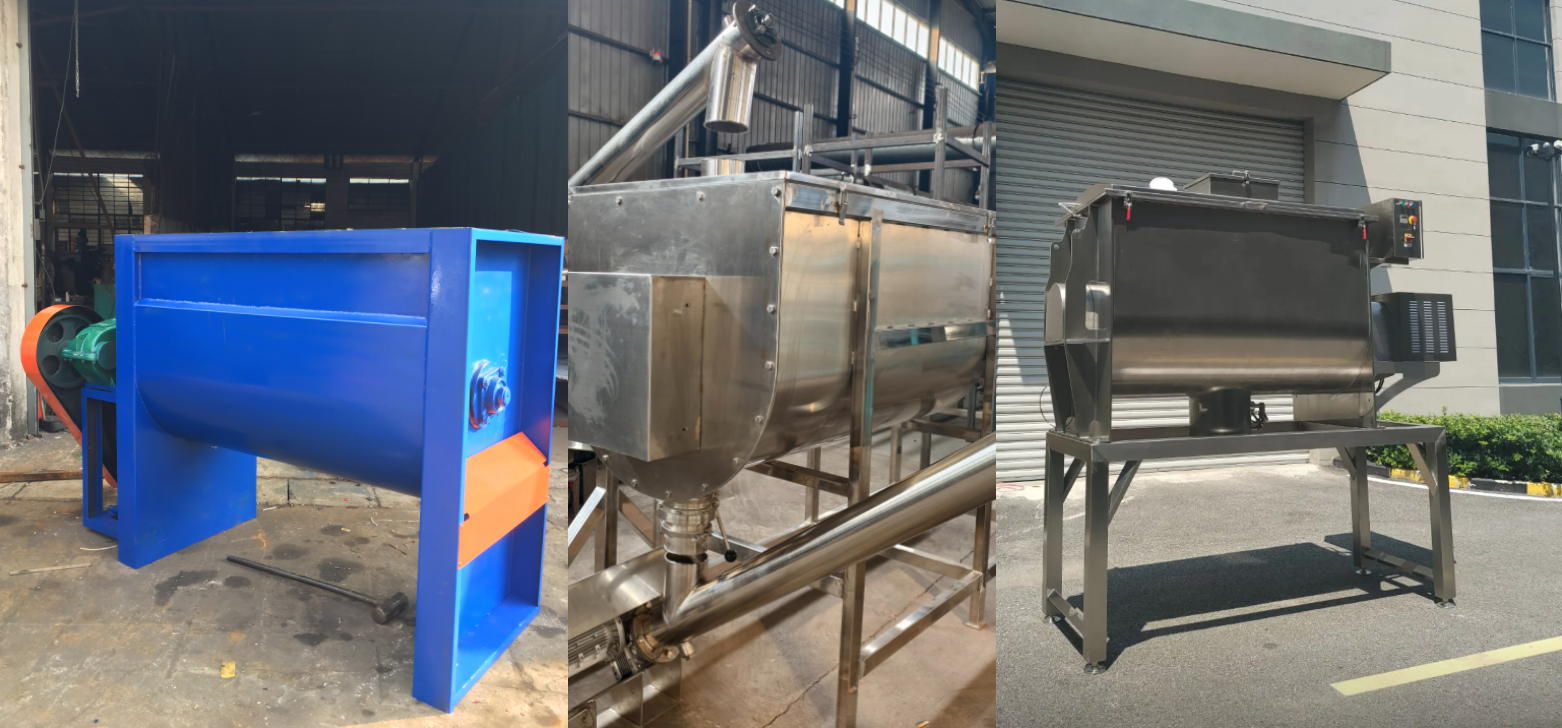
304 stainless steel: Suitable for mixing scenes of general chemicals, foods and other non-corrosive materials, such as flour mixing, general pigment mixing, etc. Its cost is economical, 20-30% lower than 316L stainless steel, and it is the preferred material when corrosion resistance is not required.
316L stainless steel: Mainly suitable for scenes such as pharmaceuticals, salts, and acidic materials, such as raw material mixing and acid dye production. This material is resistant to chloride ion corrosion, and the surface can be mirror-polished with Ra≤0.8μm, meeting high hygiene standards and corrosion resistance requirements.
Wear-resistant reinforcement scheme: When processing materials with Mohs hardness ≥7, tungsten carbide can be used to inlay the edge of the spiral ribbon to enhance wear resistance; if it is necessary to cope with high temperature conditions above 300℃, ceramic lining can be selected to improve wear resistance while meeting high temperature resistance requirements.
| Model | LHY-0.25 | LHY-0.5 | LHY-1 | LHY-1.5 | LHY-2 | LHY-3 | LHY-4 | LHY-6 | LHY-8 | LHY-10 |
| One-time mixing (kg) | 100-150 | 200-300 | 400-600 | 600-900 | 800-1000 | 1200-1800 | 1600-2400 | 2400-3600 | 3200-4800 | 4000-6000 |
| Mixing time (min) | 8-20 | 8-20 | 8-20 | 8-20 | 8-20 | 8-20 | 8-20 | 8-20 | 8-20 | 8-20 |
| Mixing speed (r/min) | 60 | 55 | 45 | 40 | 35 | 25 | 25 | 20 | 15 | 15 |
| Motor power (kw) | 3-5.5 | 4-11 | 7.5-15 | 11-18.5 | 15-22 | 18.5-30 | 22-37 | 37-55 | 37-55 | 45-75 |
| Weight (kg) | 500 | 900 | 1800 | 2500 | 3200 | 4100 | 5100 | 6300 | 7500 |
When selecting a spiral ribbon mixer, you need to pay attention to performance parameters. The volume is calculated according to batch volume and filling factor, and the power is matched according to viscosity.
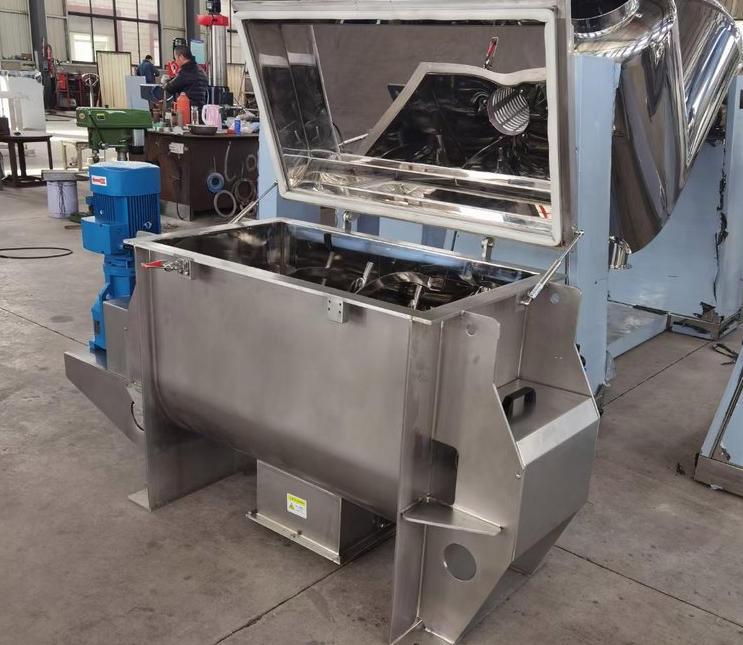
Volume calculation: According to "batch volume = cylinder volume × filling factor", it is recommended to use a U-shaped cylinder for models above 1000L.
Power configuration: empirical formula P=K×V×η (K is the power coefficient, low viscosity K=0.1-0.3kW/m³, high viscosity K=0.5-1.0kW/m³). For example, a 2000L mixer that processes 50000cP sealant needs to be configured with a power of 15-20kW.
Speed design: For high-viscosity materials, a low speed of 15-30rpm is recommended (to prevent overheating), and for dry powder mixing, a high speed of 40-60rpm can be selected.
Dahan Machinery has been focusing on the research and development and manufacturing of ribbon mixers for many years. It can support non-standard customization according to material characteristics, process requirements and production capacity, and provides 304 stainless steel (for general chemicals and food), 316L stainless steel (for medicine and acidic materials) and other material models. For high-hardness materials, it can also provide wear-resistant strengthening solutions such as tungsten carbide ribbon edges. The products are strictly quality controlled and effectively help customers in multiple industries solve mixing problems and improve benefits.
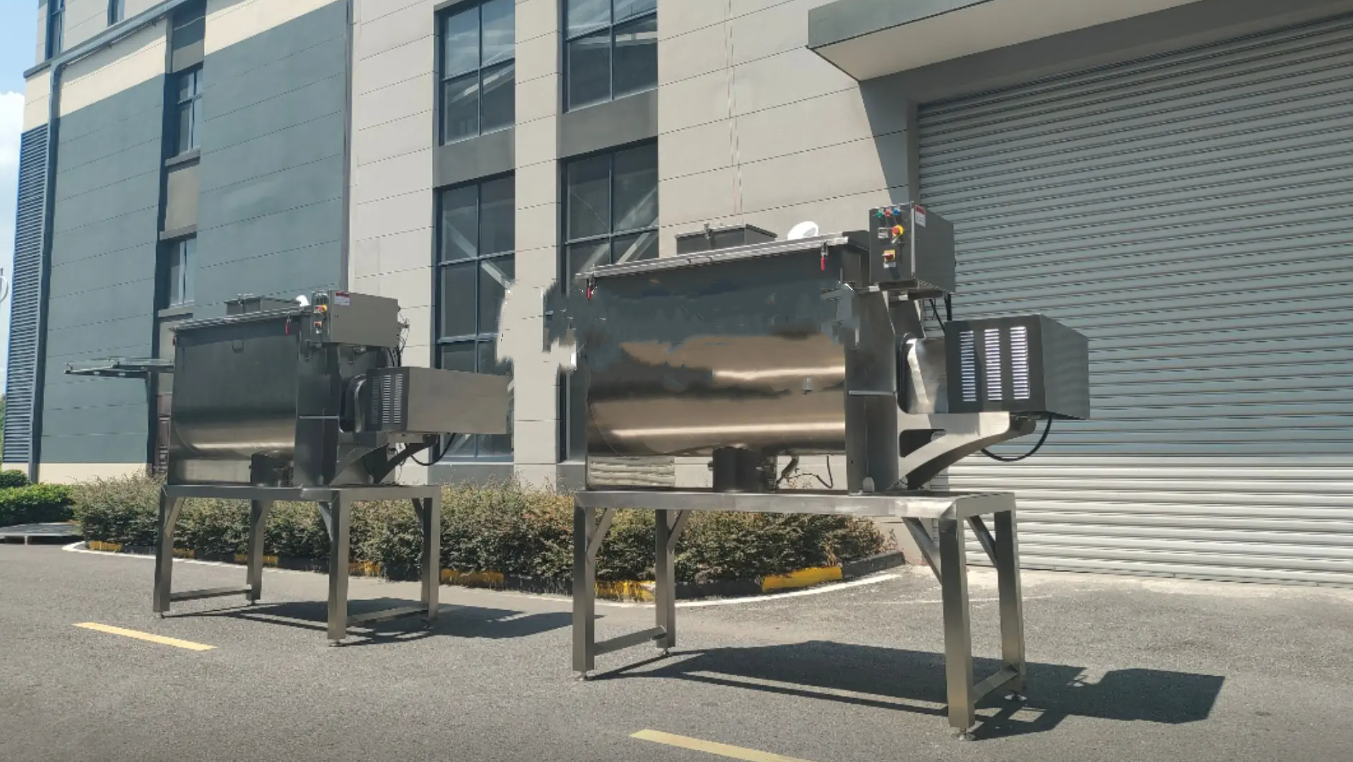
The core of the selection of ribbon mixers is the triangular matching of "material characteristics - process requirements - equipment parameters". It is recommended to verify the selection plan through material sample testing (such as mixing time - uniformity curve) to ensure that the equipment is highly consistent with production needs.
Address:China,Yanjin county forest park gate to the west 1000 meters north road.